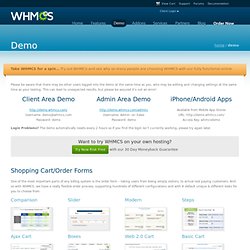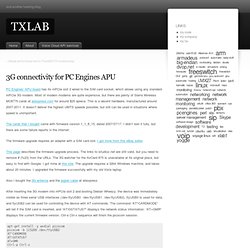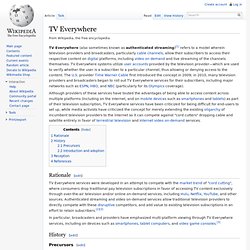

Low cost, Temperature, Humidity and Light Sensor. Remotely monitor Temperature, Humidity, Light and door access from just £250.00.

With options to add the ES-Hub and have upto 6 flood sensors or 5 and an LCD display The EM01b-STN is the entry level version of this very flexible temperature, humidity light and optional door contact remote monitor. Easy to use and set up the EM01b is exceptional value in remotely monitoring temperature and other parameters via a LAN connection. With its own web address, that is entirely configurable by the user as required, the EM01b works straight from the box. For more advanced administrators the EM01b can be easily intergrated with NAGIOS®: which is a popular open source computer system and network monitoring software application. The EM01b is a powerful websensor for Server Rooms, Warehouses and is being used extensively in the HVVAC (heating, ventilation, and air conditioning) Industry. The Websensor EM01B connects directly to your Ethernet network via a 10/100 Mbps switch or hub port. Options.
Open Switching HW. Entbündelte Anschlusszentralen. Vyatta. Save and Restore Vyatta 6.4 Settings. Details Category: Vyatta Tutorials Published: Tuesday, 09 October 2012 01:43 Written by Tony Hits: 7940 Have you ever wanted to save or restore your Vyatta configurations?

First lets start with how to save your configuration. To Save a Vyatta Configuration From the Vyatta command line type #save #commit Remember that ipaddress will be replaced with the ip address of your TFTP server. To help with your figuring out what the config is, you should name the file something that is memorable to you. To Restore a Vyatta Configuration Restoring the file is performed in the same manner as saving the file only you use the load command. #load If you want the change to survive a boot make sure to save the changes to the boot file. WHMCS. Please be aware that there may be other users logged into the demo at the same time as you, who may be editing and changing settings at the same time as your testing.

This can lead to unexpected results, but please be assured it’s not an error! iPhone/Android Apps Available from Mobile App StoresURL: Access Key: whmcsdemo Login Problems? The demo automatically resets every 2 hours so if you find the login isn’t currently working, please try again later. Want to try WHMCS on your own hosting? Snabb. 3G connectivity for PC Engines APU. PC Engines’ APU board has its mPCIe slot 2 wired to the SIM card socket, which allows using any standard mPCIe 3G modem.

Most of modern modems are quite expensive, but there are plenty of Sierra Wireless MC8775 cards at aliexpress.com for around $20 apiece. This is a decent hardware, manufactured around 2007-2011. It doesn’t deliver the highest UMTS speeds possible, but still can be used in situations where speed is unimportant. The cards that I bought came with firmware version 1_1_8_15, dated 2007/07/17. I didn’t test it fully, but there are some failure reports in the internet. The firmware upgrade requires an adapter with a SIM card slot. This page describes the firmware upgrade process. Also I bought the 3G antenna and the pigtail cable at aliexpress. apt-get install -y wvdial picocom picocom -b 115200 /dev/ttyUSB2 AT^CARDMODE AT! The following /etc/wvdial.conf works with Sunrise.ch 3G network: Like this: StorPool. Software-defined distributed storage. Tails - Privacy for anyone anywhere. IXP Toolkit. Tor Project: Anonymity Online.
BCP38.
Open Source Workflow Software & Business Process Management BPM. OpenERP. IRC. SIP. Open Broadcaster Software - Download. DNS. NicTool - Enterprise DNS Management. BGP. Pack Logiciels Libres de l'Entreprise. TV Everywhere. TV Everywhere (also sometimes known as authenticated streaming)[1] refers to a model wherein television providers and broadcasters, particularly cable channels, allow their subscribers to access their respective content on digital platforms, including video on demand and live streaming of the channels themselves.

TV Everywhere systems utilize user accounts provided by the television provider—which are used to verify whether the user is a subscriber to a particular channel, thus allowing or denying access to the content. The U.S. provider Time Warner Cable first introduced the concept in 2009; in 2010, many television providers and broadcasters began to roll out TV Everywhere services for their subscribers, including major networks such as ESPN, HBO, and NBC (particularly for its Olympics coverage). Rationale[edit] History[edit] Precursors[edit] Introduction and adoption[edit] Reception[edit] References[edit] Cozy, a personal cloud you can hack, host and delete. Contrôle parental sur Ordinateur et Smartphone Android. Cozy, a personal cloud you can hack, host and delete. Scratch - Imagine, Program, Share. IPv6Tutorial.
VoIP. Nginx. Page d'accueil - Why! open computing. Apache CloudStack: Open Source Cloud Computing. Monitoring. Network Performance. Apache Bloodhound. Aruba. Hardware. Software.